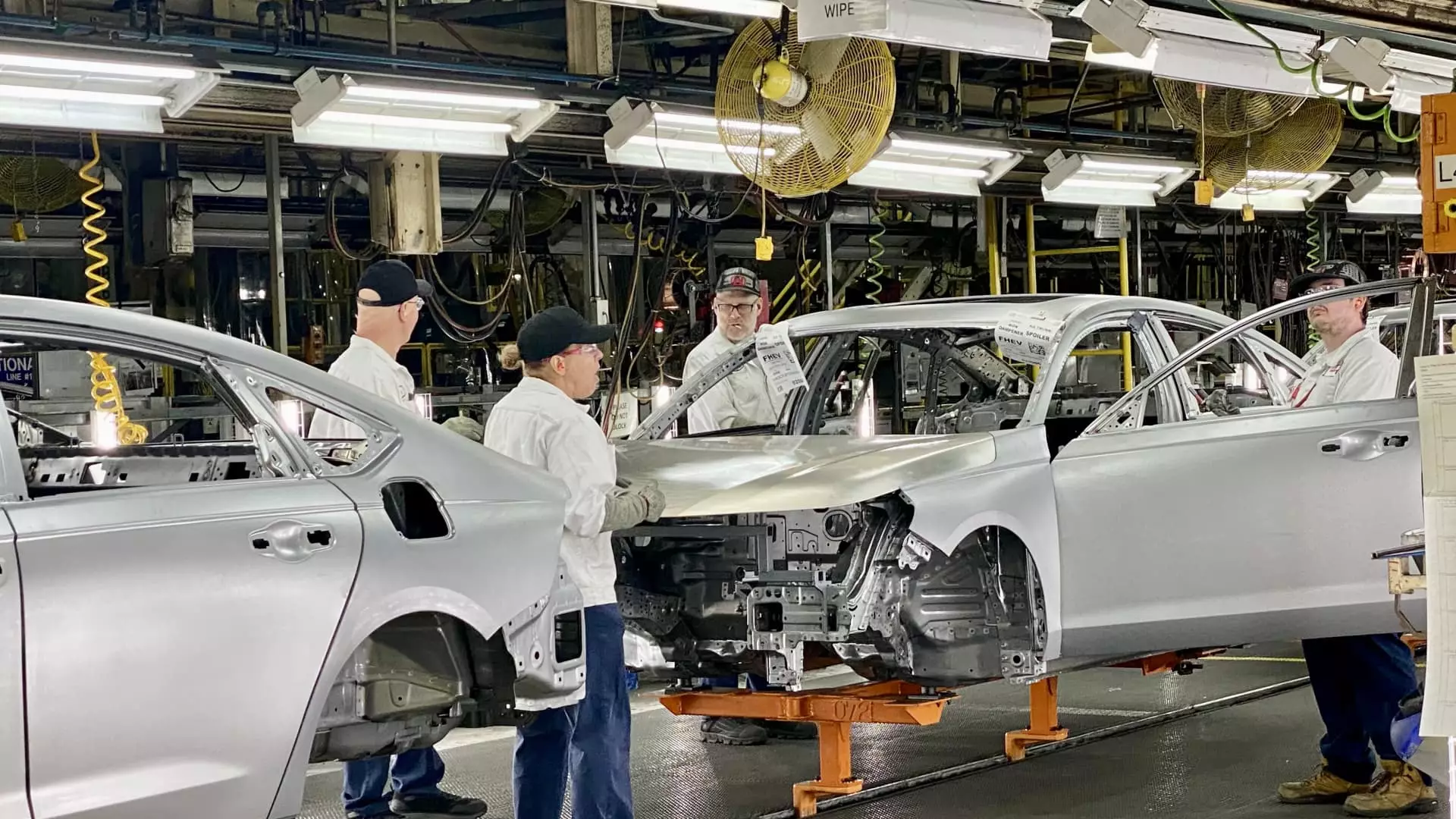As the automotive industry shifts towards electrification, Honda Motor Co. is making a striking pivot by establishing its next-generation electric vehicle (EV) manufacturing hub in Ohio. This decision, revealed during a recent investment announcement of over $1 billion—up from an initial $700 million—marks an unprecedented move for the 75-year-old Japanese automaker, previously known for its manufacturing focus in Japan. The strategic investments aim not only to modernize Honda’s operations but also to position it as a competitive player in the North American EV market.
Trailblazing Technological Adoption
At the heart of Honda’s ambitious Ohio strategy are six “giga presses,” a manufacturing innovation popularized by Tesla. These massive machines, capable of exerting 6,000 tons of pressure, will revolutionize the way Honda constructs its vehicles, potentially allowing the company to cast entire components in a single piece rather than assembling them from numerous smaller parts. Such advancements are designed to significantly reduce production costs while enhancing operational efficiency. According to industry analysts at S&P Global Mobility, successful adoption of this gigacasting technology could lead to a transformational shift in how vehicles are manufactured across the board.
In tandem with these presses, Honda is developing a state-of-the-art “cell” manufacturing framework dedicated to producing battery cases, which are essential for its forthcoming electric models. This combined focus on innovative machinery and modern manufacturing processes aligns with the company’s broader goals of achieving sustainable production practices.
Creating a Comprehensive Production Ecosystem
The investment includes the establishment of a large battery plant and the integration of multiple EV production capabilities under one roof. Honda’s Marysville Auto Plant will serve as a versatile facility capable of producing traditional vehicles, hybrids, and fully electric models on a single assembly line. This adaptability illustrates the company’s commitment to leveraging existing resources while transitioning into an electric future. Mike Fischer, North American lead for Honda’s battery-electric vehicle initiatives, emphasized that this EV hub would set the global benchmark for manufacturing within the sector.
Moreover, the nearby Anna Engine Plant, which has seen robust growth since its inception, will manufacture aluminum battery packs using innovative techniques that prioritize recycling and waste reduction. This integration indicates Honda’s holistic approach to production—prioritizing not just the manufacturing of vehicles but also their environmental footprint.
The Ohio investments can be seen as a response to current geopolitical and economic factors. With increasing pressures from the Biden administration to shorten supply chains and emphasize domestic production, Honda’s decision to bolster its American manufacturing capabilities is not only strategic but essential. Additionally, the potential for elevated tariffs on imported vehicles under previous administrations adds urgency to establishing local production facilities.
Despite being slower to pivot toward electric vehicles compared to competitors, such as Ford and General Motors, Honda appears determined to reclaim market relevance. Presently, its two all-electric models—the Honda Prologue and Acura ZDX—are manufactured in Mexico, revealing a gap in local production that Honda seeks to close with this new investment plan.
Despite facing challenges, including a sluggish adoption rate of EVs in the United States, Honda remains resolute in its commitment to achieving zero environmental impact by 2050. This ambitious goal encompasses not only the production of zero-emission vehicles but also the advancement of carbon neutrality and the promotion of circular economies in manufacturing processes. As Honda seeks to redefine its operational blueprint, senior vice president Bob Schwyn likened this evolution to a “second founding” for the company, emphasizing the significance of this venture.
The innovations being introduced in Ohio are not merely operational upgrades; they represent Honda’s response to a rapidly changing market driven by technological advancement and evolving consumer preferences. While many automakers have reevaluated their sustainability targets, Honda’s steadfast objectives reinforce its dedication to solidifying its position in the electric vehicle marketplace.
As Honda embarks on this transformative journey, its success will depend on more than just technological investments. The company’s ability to adapt to an ever-changing landscape, navigate regulatory challenges, and respond to consumer demands will be crucial. The integration of innovative manufacturing processes coupled with a focus on sustainability paints a promising picture for Honda’s future in the EV sector. If executed effectively, this strategy could redefine not only Honda’s legacy but also the landscape of automotive manufacturing in America.

Leave a Reply